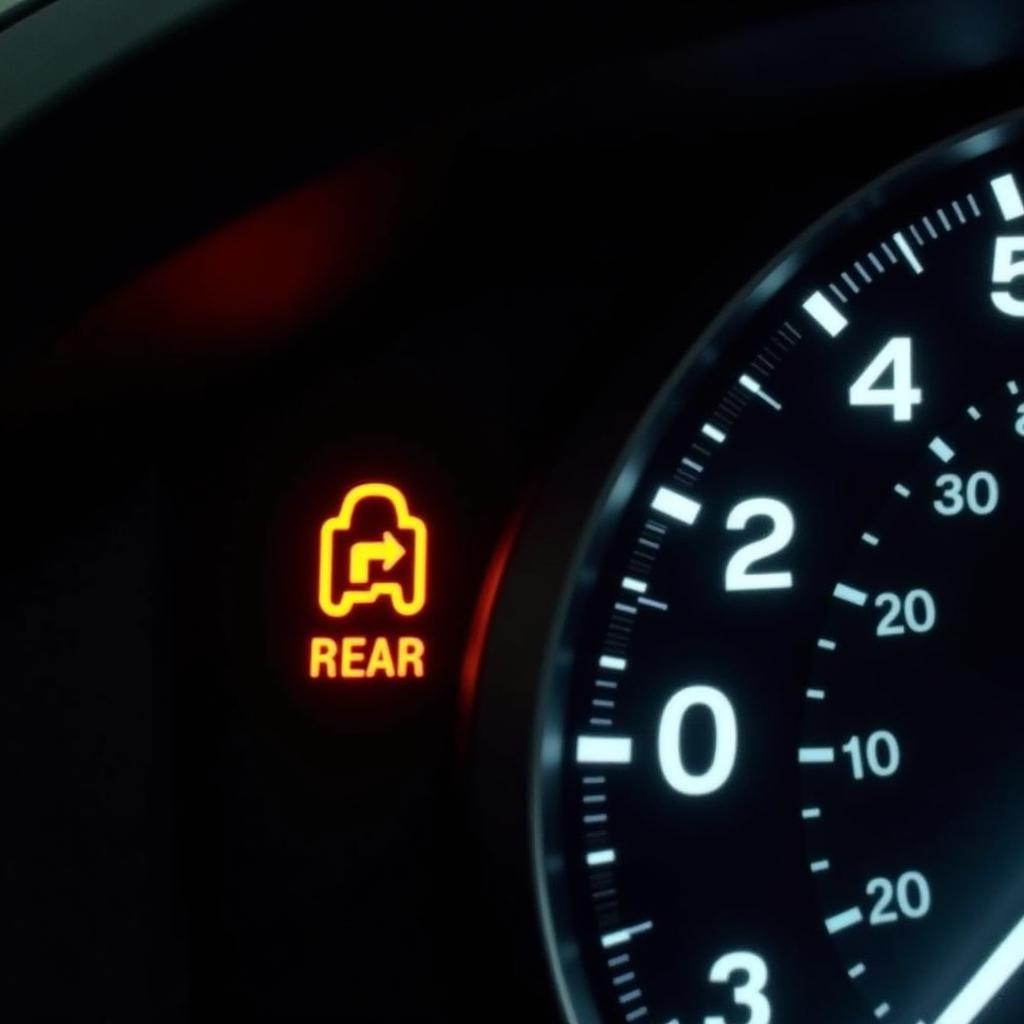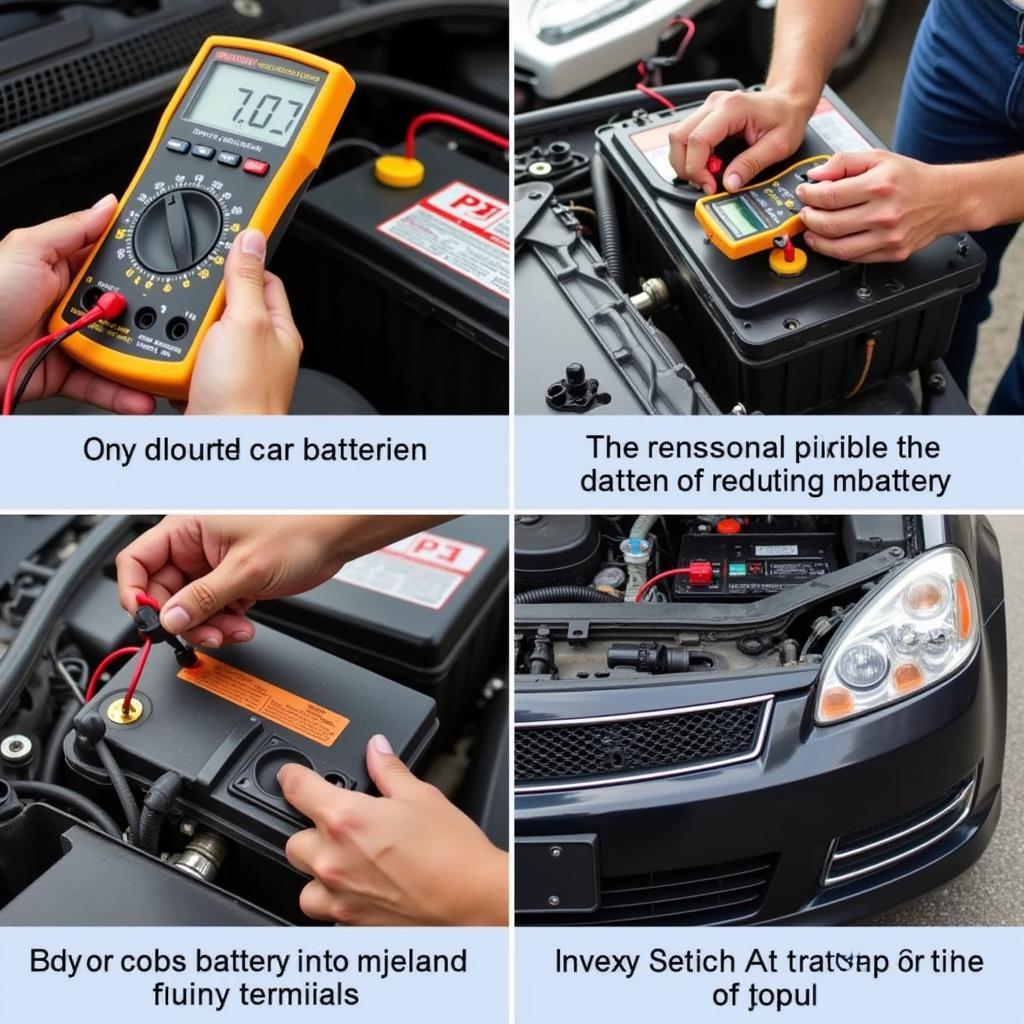The Toyota Prius, known for its fuel efficiency and reliability, sometimes presents a common issue: the rear seat belt warning. This warning, often accompanied by a chime or flashing light on the dashboard, indicates a potential problem with the rear seat belt system. While this can be a minor annoyance, it’s crucial to understand the cause and address it to ensure the safety of all passengers.
Decoding the Warning: Why is My Prius Beeping?
The rear seat belt warning in your Toyota Prius is designed to activate when the system detects a problem, the most frequent being an unbuckled seat belt in the rear seats. However, there are other reasons this warning might be triggered:
- Weight on the seat: Even a bag or grocery item placed on a rear seat can be heavy enough to trigger the sensor, leading to the warning chime and light.
- Faulty sensor: Like any electrical component, the seat belt sensor itself can malfunction. This might occur due to wear and tear, exposure to moisture, or other electrical issues.
- Wiring problems: A loose connection or damaged wire within the seat belt system can disrupt the signal from the sensor, leading to a false warning.
 Toyota Prius Rear Seat Warning Light on Dashboard
Toyota Prius Rear Seat Warning Light on Dashboard
Troubleshooting the Toyota Prius Rear Seat Belt Warning: A Step-by-Step Guide
Before rushing to a mechanic, there are several troubleshooting steps you can take to try and resolve the issue yourself:
- Check the obvious: Start by ensuring all rear seat belts are securely fastened. Press firmly on the seat to make sure there are no objects resting on it that might trigger the sensor.
- Inspect the buckles: Examine the rear seat belt buckles for any signs of damage or debris. A foreign object lodged in the buckle can prevent the belt from latching properly and trigger the warning.
- Reset the system: Sometimes, a simple reset can resolve temporary glitches. Try disconnecting the battery’s negative terminal for a few minutes, then reconnect it. This might clear the error code and reset the warning system.
- Consult the owner’s manual: Your Prius’s owner’s manual provides specific information about the seat belt system, including the location of fuses and other relevant components.
When to Seek Professional Help
If the troubleshooting steps above don’t resolve the issue, it’s advisable to consult with a qualified automotive electrician or mechanic, especially one specializing in Toyota vehicles. They have the diagnostic tools and expertise to pinpoint the root cause of the problem.
“The rear seat belt warning system is a crucial safety feature,” says John Miller, a certified Toyota mechanic with over 20 years of experience. “Ignoring a persistent warning can pose a serious risk to passengers, especially in the event of an accident.”
Remote Diagnostics and Software Solutions: The Future of Car Repair
With advancements in automotive technology, remote diagnostics and software solutions are becoming increasingly common for addressing car issues, including seat belt warnings.
Using specialized software and equipment, technicians can now remotely access your Prius’s computer system to:
- Retrieve diagnostic trouble codes (DTCs)
- Pinpoint the faulty sensor or component
- Perform software updates or recalibrations
This approach offers several advantages:
- Convenience: You can have your car diagnosed from the comfort of your home or office.
- Speed: Remote diagnostics often provide a faster solution compared to traditional methods.
- Cost-effectiveness: In some cases, remote solutions can be more affordable than physical repairs.
 Mechanic Performing Remote Diagnostics on a Toyota Prius
Mechanic Performing Remote Diagnostics on a Toyota Prius
Conclusion
The rear seat belt warning in your Toyota Prius is a vital safety feature designed to protect you and your passengers. While a simple fix like a misplaced item or loose connection might be the culprit, a persistent warning requires professional attention. Remember, ensuring the proper functionality of your car’s safety systems is paramount for a safe and enjoyable driving experience.

